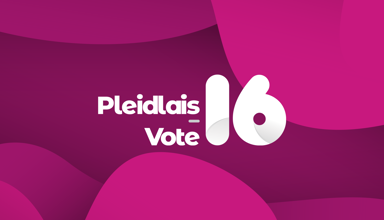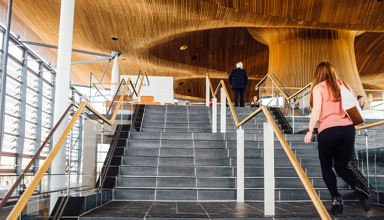To mark LGBT+ History Month and in the run up to the Senedd elections, Mark Etheridge, curator at St Fagans National Museum of History has selected key items from the museum’s collection that highlight the importance of political activism and of using your voice.
Collecting LGBTQ+ histories at St Fagans National Museum of History
I’m a curator at St Fagans National Museum of History with responsibility for the LGBTQ+ history collection. The collection contains objects, documents, photographs and oral histories covering areas such as pride events and activism, as well as items representing the everyday lives of LGBTQ people. Since assuming responsibility for this collection in 2019, I have been working towards making it fully representative of all LGBTQ communities in Wales.
In this blogpost I will highlight some of the objects we have in St Fagans collected from various pride events, and campaigning material made and worn to protest against Section 28.
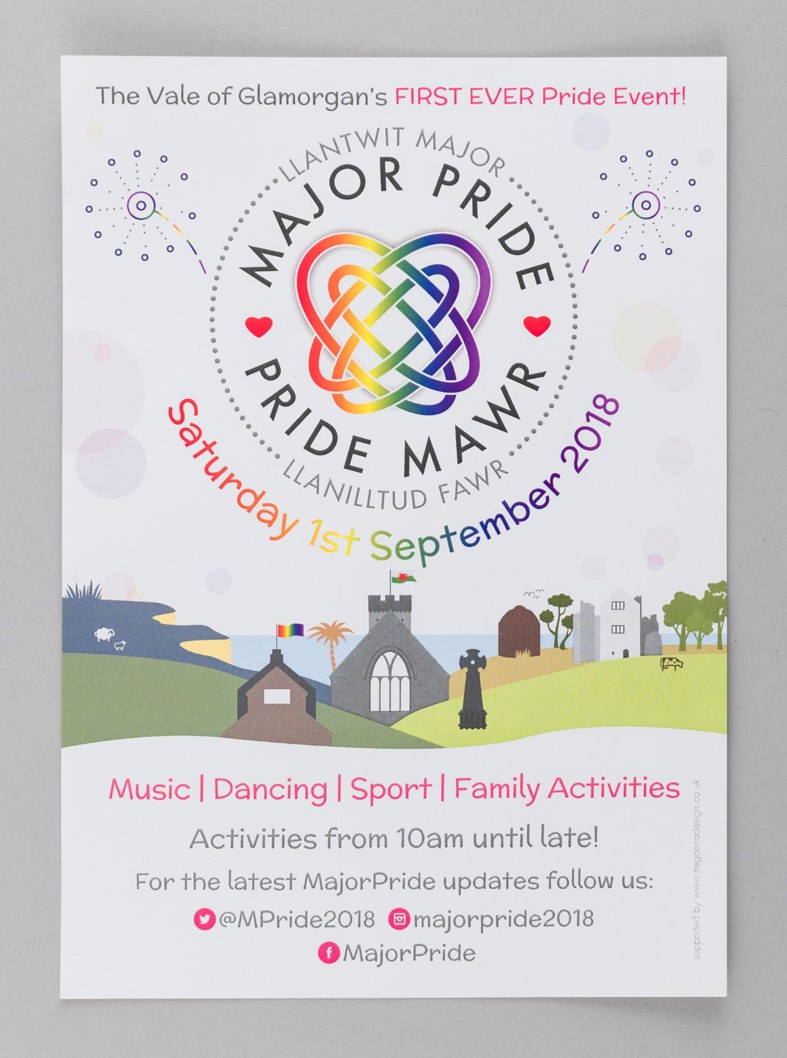
Flyer for Llantwit Major Pride, the Vale of Glamorgan’s first ever pride event, held on 1 September 2018.
© Amgueddfa Cymru - National Museum Wales
Pride events during 2020 were very different due to Covid-19. Some were cancelled, while many others were held as virtual prides. These included Abberation Pride for the LGBTQ community of mid-Wales held on 18 July; a Wales-Wide Virtual Pride that took place on the 24 and 25 July (where community groups and individuals from across Wales contributed); and Glitter Cymru held a Virtual Pride on the 22 August. The largest pride event in Wales, Pride Cymru, that usually takes place in Cardiff over the late August Bank Holiday weekend, held instead a Virtual Big Week from the 24 to 30 August, where the Museum’s involvement included a Queer Virtual Tour of the Art and History & Archaeology collections.
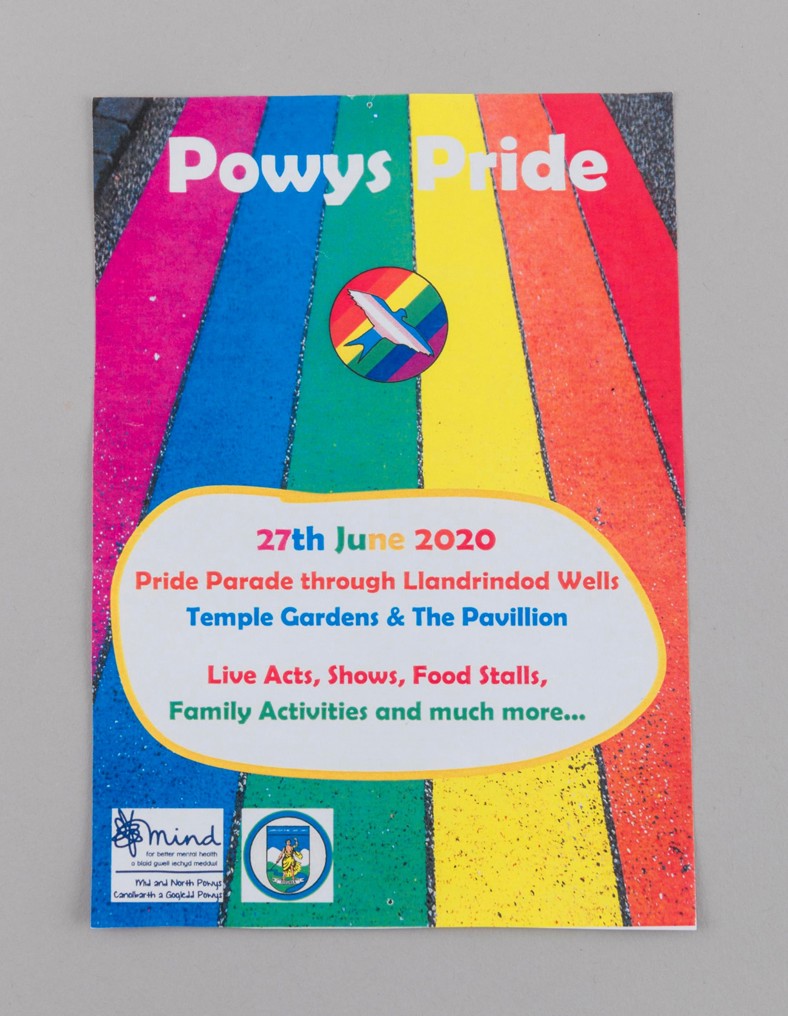
Flyer is for what would have been the first Powys Pride. Due to be held on 27 June 2020 it was cancelled because of the pandemic.
© Amgueddfa Cymru - National Museum Wales
The move to holding virtual online pride events in 2020 meant that we had to adapt our methods of collecting. As there were few physical objects to collect, we had to switch to the digital, collecting some of the videos and digital marketing for the national collection. I worked with LGBTQymru from the outset to make sure that the entire programme of the first Wales Wide Virtual Pride was collected, and it’s now preserved in the archive at St Fagans as a permanent record. These virtual prides show how Wales’ LGBTQ community responded and adapted to the Covid-19 crisis.
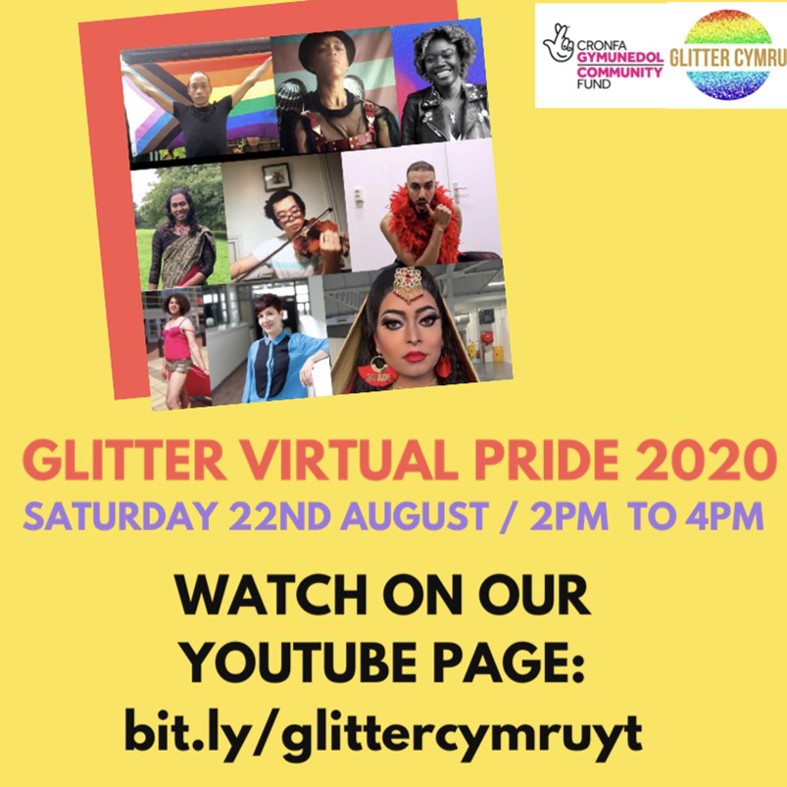
Digital flyer for Glitter Cymru’s Virtual Pride.
© Amgueddfa Cymru - National Museum Wales
Equality in areas such as same-sex marriage has been hard fought by the LGBTQ community and their allies. This involved individuals and groups coming together to protest for equal rights, address discrimination, and to accomplish other shared goals. St Fagans has some important objects that represent some of these protests and demonstrations. One example is this banner, made about 2000 and carried in the march at Gay Pride in London by the Older Lesbian Network (Wales). This group was established in 1993 to provide opportunities for older lesbians who were opposed to discrimination, and was run by volunteers with the aim of encouraging pride and confidence in its members.
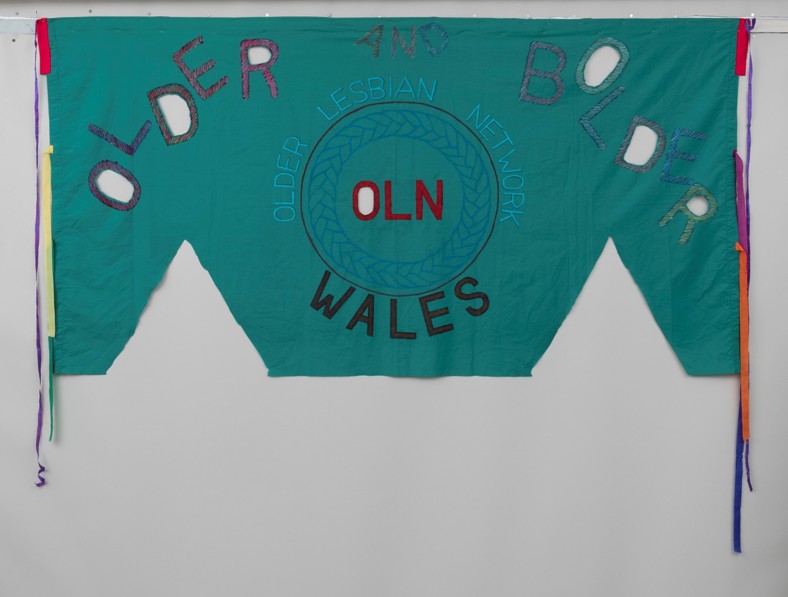
Banner of the Older Lesbian Network (Wales) made about 2000.
© Amgueddfa Cymru - National Museum Wales
Glitter Cymru was founded in 2016 as a social and support group for LGBTQ ethnic minority people living in Wales. Their first banner was made in 2018 and carried at pride marches to highlight the visibility of LGBTQ ethnic minority people in Wales. It was also used at the first Welsh BAME Pride held on 10 August 2019 at Cathays Community Centre, Cardiff, as well as being hung on the door during Glitter meet ups.
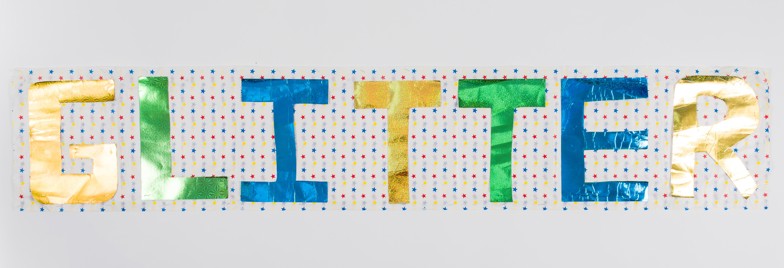
Glitter Cymru banner made in 2018.
© Amgueddfa Cymru - National Museum Wales
Section 28 of the Local Government Act was enacted in May 1988, to prohibit the promotion of homosexuality by local authorities and ban the teaching in schools of “the acceptability of homosexuality as a pretended family relationship”. At the time the Prime Minister Margaret Thatcher said "Children who need to be taught to respect traditional moral values are being taught that they have an inalienable right to be gay”. The law was partially brought about by complaints over the book ‘Jenny Lives with Eric and Martin’, a children’s book by author Susanne Bösche that was first published in English in 1983 by Gay Men’s Press. The author aimed to give children knowledge about different types of family relationships, but when found in a public library in 1986 it gained a lot of attention with some of the UK media.
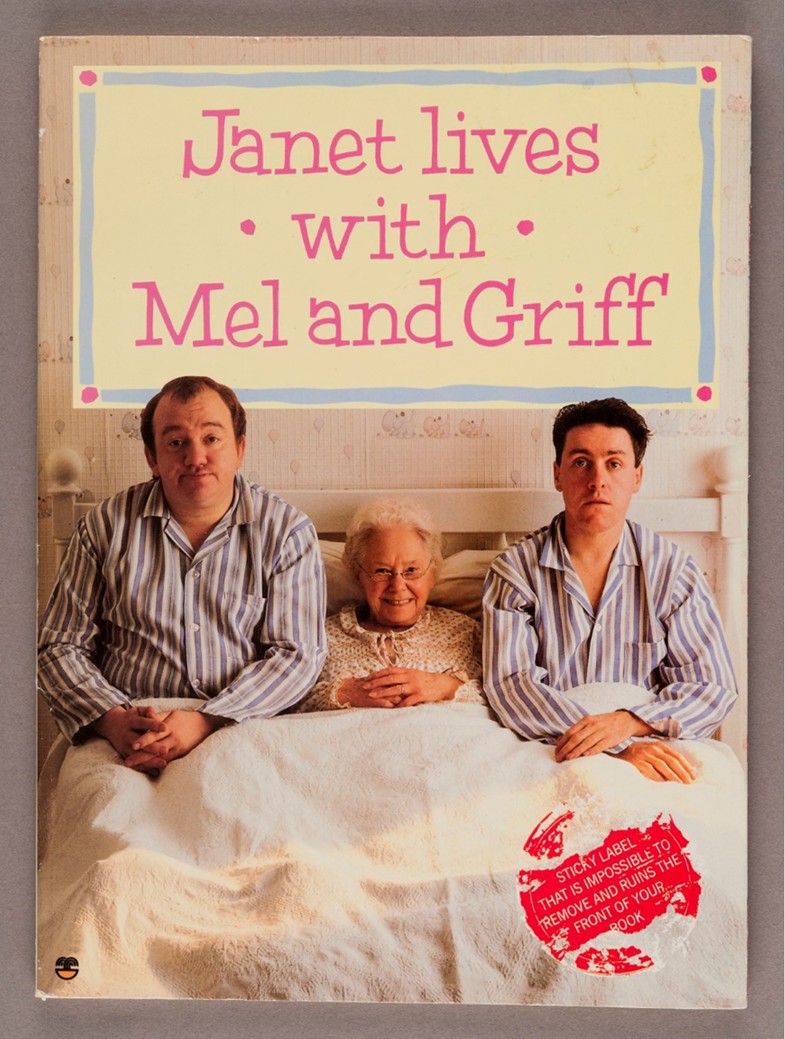 This book from 1988 makes fun of the furore caused by the original book. From a collection of lesbian activist material donated by Sheryl Checuti of Cardiff.
This book from 1988 makes fun of the furore caused by the original book. From a collection of lesbian activist material donated by Sheryl Checuti of Cardiff.
© Amgueddfa Cymru - National Museum Wales
Section 28 caused a large number of protests from campaigners arguing that the act discriminated against homosexuals, and that it was intolerant and unjust. The law was eventually repealed in 2000 in Scotland and 2003 in the rest of the UK. In Wales there were a number of protests across the country. One protest march in Aberystwyth was attended by members of CYLCH (Cymdeithas Lesbiaid a Hoywon Cymraeg eu Hiaith) - a society for Welsh-speaking gay and lesbian people.
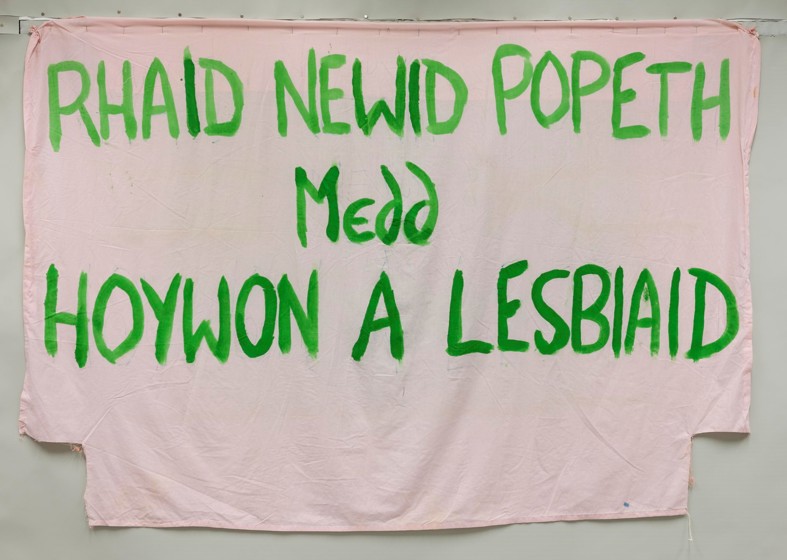
Banner used by CYLCH to protest against Section 28 in a march in Aberystwyth.
© Amgueddfa Cymru - National Museum Wales
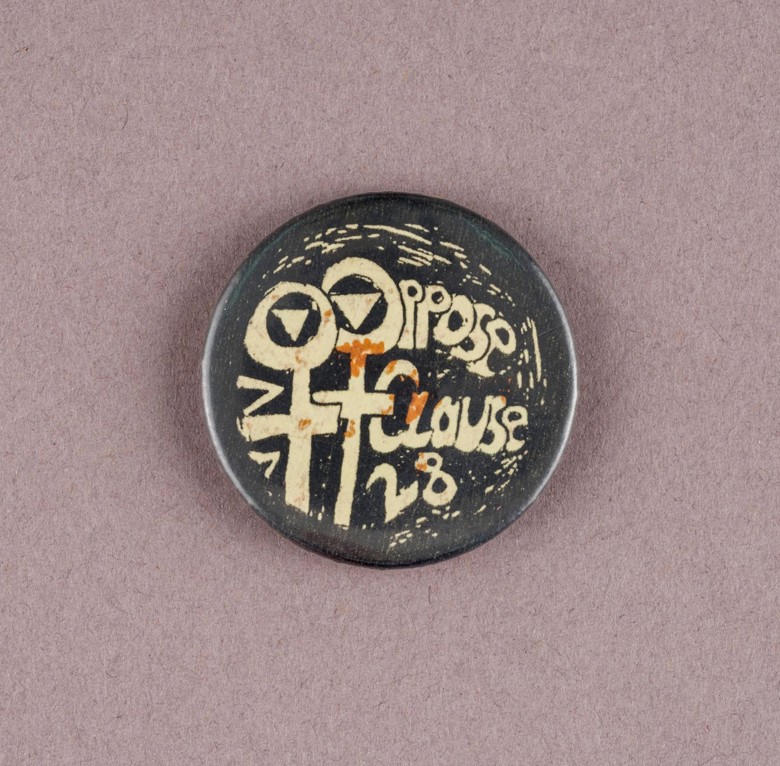
Badge worn during the campaign against Section 28.
© Amgueddfa Cymru - National Museum Wales
Campaigns for equal rights are still very much on-going. Restrictions set by SABTO (the UK advisory committee on the Safety of Blood, Tissues and Organs) previously prevented gay and bisexual men from donating blood. After many years of campaigning good news came on 14 December 2020 when it was announced by the Welsh Government that the ban and some restrictions would be lifted - a big step towards full equality in this area.
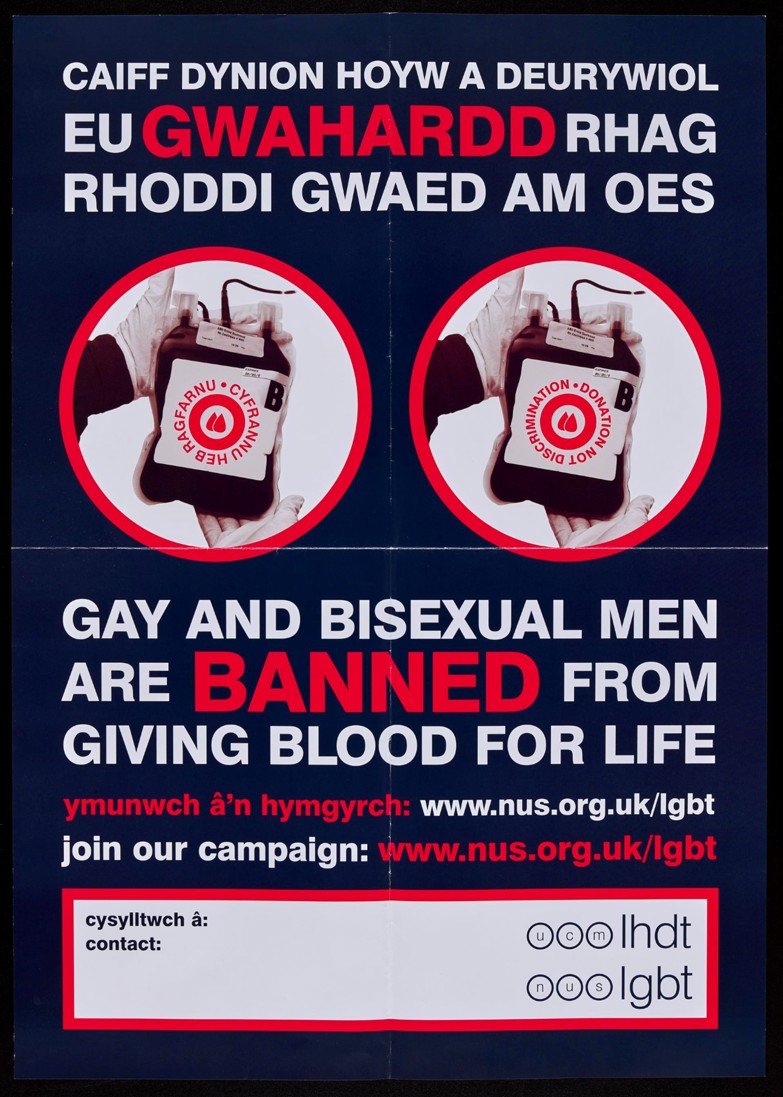
Poster for campaign by National Union of Students against discriminatory blood donations.
© Amgueddfa Cymru - National Museum Wales
Unless objects and their associated stories are preserved for future generations, places like St Fagans will be unable to tell the full history of the LGBTQ community in Wales. Please contact me if you have any objects you would like to donate to help build up the national LGBTQ+ collection at St Fagans National Museum of History.
mark.etheridge@museumwales.ac.uk
Twitter - @CuratorMark
Finally, you can search and view objects from the collection at St Fagans on the Museum’s Collections Online catalogue - https://museum.wales/collections/online/


